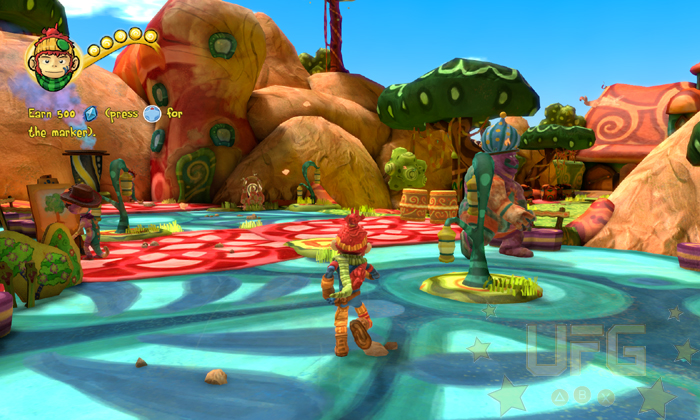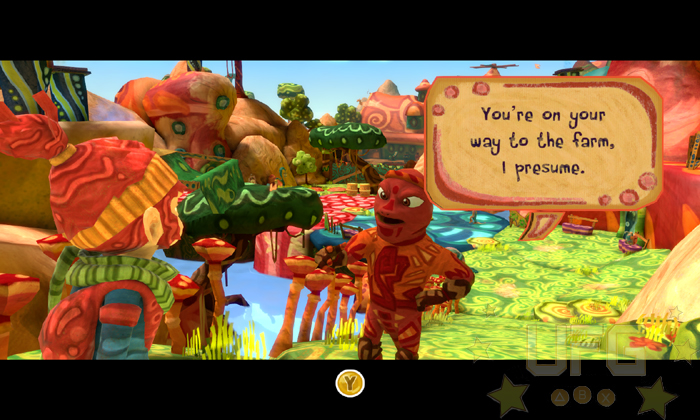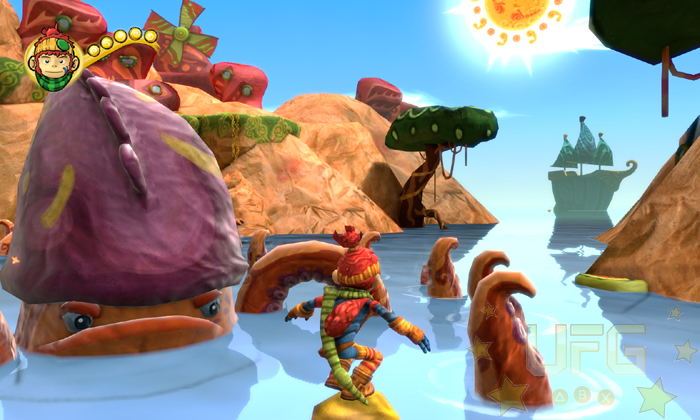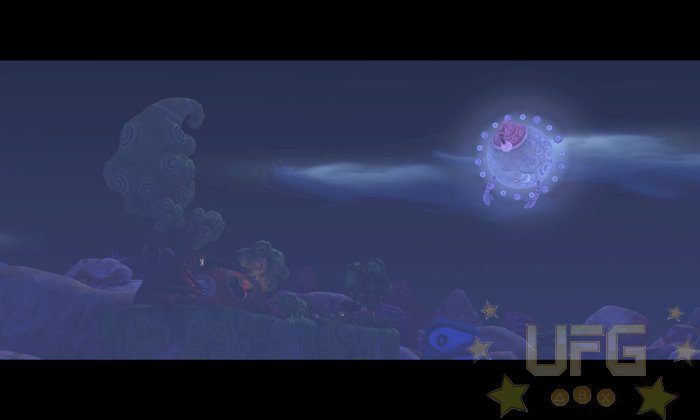UFG Goes Hands on With The Last Tinker: City of Colors!
I have really come to appreciate how my job gives me constant exposure to indie games. As much as I love previewing and reviewing AAA titles, the indie scene has been great to me as of late. Independent developers are taking risks, either by trying to create totally new experiences or by providing a unique spin to classic genres. I mean, if I wanted to play a platformer that was similar to titles like Banjo Kazooie or Jak and Daxter that featured the visual styling’s of Viva Piñata where would I look? Well, recently I was given a preview code for Mimimi Productions’ latest game, an action adventure/3D platformer called The Last Tinker: City of Colors. The goal was to allow me to sample some of the gameplay and story elements to get a feel as to what the developers were going for. I assume that they were aiming to make me fall in love their game and vehemently demand…er…politely request for a review copy to be sent posthaste!
The Last Tinker follows the story of a young boy named Koru and his journey to save Tinkerworld. For a long time, the multicolored inhabitants of Tinkerworld lived in peace with one another. As the story goes, things slowly started to unravel as each “color” started separating from one another. These color groups went so far as to divide their city into districts where only one of each color would reside. Our hero Koru happens to live in Colortown, one of the last places where all colors are welcome. Unfortunately, things aren’t going so well in his town either, as the conflicts between colors escalates. Who or what is behind all of this color animosity? What role does Koru play in it all? That’s what I was hoping to find out.
The game opens up on a regular day, with Koru sleeping in his bed. He’s woken up by his friend Tap who informs him its race day; a big event for their town. It’s here that I was shown how to control Koru; like other titles of this ilk the first day is basically a tutorial. Heading to the center of town, I came up to a gate that was jammed shut. The NPC explained how I’d either have to wait for it to be fixed or find another route. Of course, I found another path allowing me to further learn the controls. Running, jumping, rolling, sliding on wires and more were introduced to me as I went through the town. Before long another obstacle blocked my progress, this time in the form of the race entry fee. In order to raise the money I had to perform odd jobs (read: more tutorials) for different towns folk. Again, normal stuff for a game like this.
Mimimi Productions used a tried and true formula for creating The Last Tinker’s opening chapter and I’m totally ok with this. Even though I’ve done this type of thing practically a hundred times, I was still having fun running around this colorful world. The environment is made for exploring with hidden places housing collectables and shortcuts to different areas abound. The combat is made of simple systems; mashing the attack button will do combos, pressing the dodge button makes Koru roll out of the way of danger, etc. Additionally, the ability to bounce between targets in quick succession is a nice touch. The combat is serviceable with the potential for growth – more moves and powers will probably be introduced as players progress through the game. The only thing that I didn’t like was the auto-jumping feature. To jump across gaps all you had to do was run in their direction. Koru did all of the work. On the surface this isn’t an issue (the recent Legend of Zelda titles had auto-jumping as well). It’s just that with this game it isn’t always consistently applied.
When running towards the edge of a platform Koru will automatically jump to the adjacent platform. For instance, in order to get past a river I had to jump to large rocks protruding through the water. The problem came when I had to jump from a high platform to a lower one during a quest. The ground I was on was right above where I needed to go, with a little bit of water separating me from my destination. Because it wasn’t a platform the game deemed jumpable, I ran off the edge and fell into the water (losing some of my health). It was an easy jump to clear. I just had to roll at the right time to get enough momentum to carry me across once I started falling. The loss of health could have been avoided if I was just allowed to jump myself though.
The jumping discrepancy is quite minor when considering how the rest of my brief time was spent. Like I said, I was having fun. One thing that really stood out beyond the gameplay though, was the art style. The game’s world is made up of color, glue, and paper – with these ingredients anything can be brought to life – including the inhabitants of Tinkerworld (aside from Koru). Because of this, everything has a cardboard/papier-mâché look. This is shown even in the dialog boxes; the word bubbles that pop up are created using cardboard and what seem to be crayons. If it isn’t cardboard, other aspects of the world take on a clay-like vibe, almost like being in a cartoon. It really is charming in every sense of the word!
As you can see, my first impression was a good one. Unfortunately (for me) I didn’t get to go past the opening chapter. So even though there was a hint of the Bleakness, the game’s antagonist(s), I didn’t get to encounter it. What I did play wasn’t a reinvention of the platforming wheel but it was fun nonetheless. I am excited about what’s to come for Koru, his friend Tap and the rest of Tinkertown; we’ve been promised over 8 hours of gameplay action and a captivating story covering present day issues on culture. Meaning a release date needs to be made…like now!



